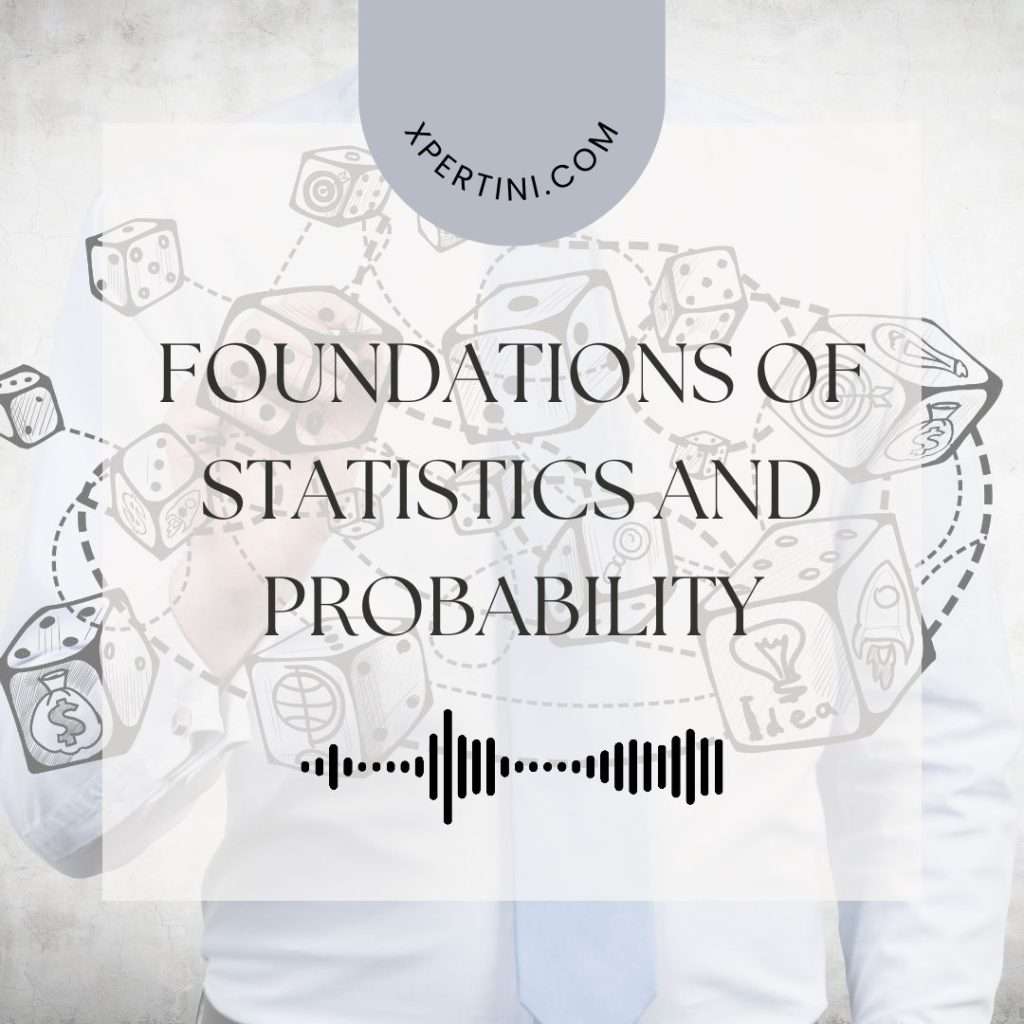Foundations of Statistics and Probability
Course Summary
Start on a transformative exploration into the foundational domains of statistics and probability, where theory meets practical application in the pursuit of informed decision-making and problem-solving prowess. This course serves as a gateway to unlocking the mysteries of data analysis, equipping students with the tools and insights necessary to navigate the landscape of statistical reasoning.
Delve into the history of statistical methods, tracing their evolution through key figures and milestones that have shaped the discipline’s trajectory. From probability basics to inferential statistics, each lesson is meticulously crafted to build a robust foundation of knowledge, preparing students to decipher complex datasets with confidence and precision.
As you journey through descriptive statistics and inferential methodologies, you’ll cultivate a keen eye for interpreting data and discerning patterns that elude the untrained observer. Harness the power of regression analysis and experimental design to uncover causal relationships and predict future outcomes, transforming raw data into actionable insights.
But statistics isn’t just about numbers—it’s about storytelling. Through the art of data visualization, students learn to communicate their findings with clarity and impact, bridging the gap between analysis and interpretation.
Beyond the confines of academia, this course illuminates the myriad career pathways available to statistical aficionados, from data science and analytics to research and beyond. Whether you’re a budding analyst, a seasoned professional seeking to expand your repertoire, or simply curious about the inner workings of probability and statistics, this course offers a roadmap to mastery in a world increasingly driven by data.
Course Overview
This course provides a fundamental understanding of statistical methods and probability theory, essential for decision-making, research, and problem-solving across various domains. Students will gain practical skills and theoretical insights to analyze data, make informed predictions, and draw valid conclusions.
Course Objectives
- Understand the basic principles of probability theory.
- Develop proficiency in statistical analysis techniques.
- Apply statistical methods to real-world problems.
- Interpret and critically evaluate statistical findings.
- Gain insight into the historical development of statistics.
- Explore the relevance of statistics and probability in various fields.
- Acquire practical skills in data visualization and presentation.
- Foster a mindset for logical and analytical thinking.
- Enhance problem-solving abilities through statistical reasoning.
- Recognize the significance of statistics in decision-making processes.
Course Outcomes
- Demonstrate proficiency in calculating probabilities for various events.
- Develop skills in designing and conducting statistical experiments.
- Analyze and interpret data using appropriate statistical techniques.
- Critically evaluate statistical studies and identify potential biases.
- Apply statistical methods to solve real-world problems.
- Understand the historical development of statistical concepts and methodologies.
- Communicate statistical findings effectively through data visualization.
- Develop a logical and analytical mindset conducive to statistical reasoning.
- Recognize the importance of statistical literacy in decision-making processes.
- Explore career opportunities in fields related to statistics and probability.
Course Audience
- Students pursuing careers in data science, analytics, or research.
- Professionals seeking to enhance their statistical knowledge and skills.
- Individuals interested in understanding the foundations of statistics and probability for personal or academic enrichment.

